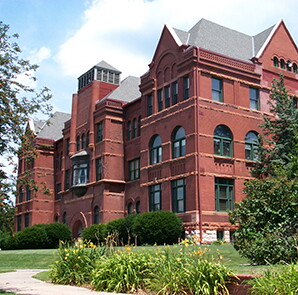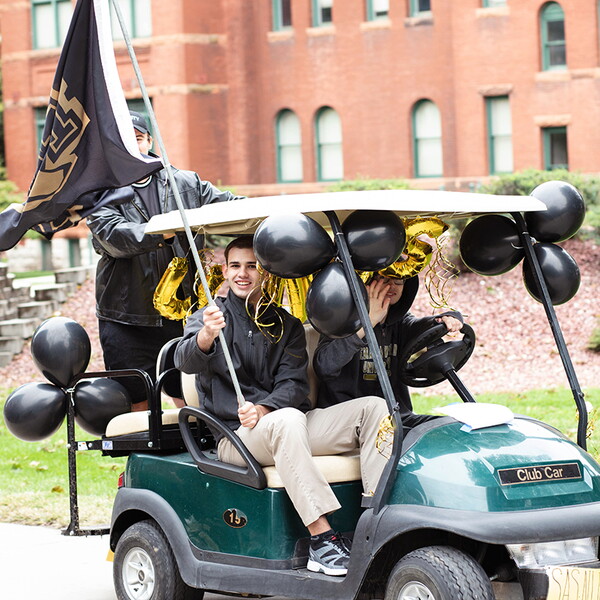In summer 2015 NASA’s New Horizons mission will be the first spacecraft to visit the icy dwarf planet, Pluto.
Its NASA’s attempt to shed some light on unfamiliar worlds that lie on the outskirts of the solar system.
Not much is known about Pluto, but recent published research by a Nebraska Wesleyan University physics professor, a NWU alum and a research team from the Southwest Research Institute in Boulder, Colo., provides new evidence for complex molecules on Pluto’s surface.
“With the New Horizons mission en route, any new information we can learn is golden,” said Nebraska Wesleyan physics professor Nathaniel Cunningham.
A research team from the Southwest Research Institute (SwRI) first approached Cunningham for help on the project. Lead project researcher Dr. Alan Stern — who has collaborated with Cunningham on other planetary studies — not only asked for Cunningham’s assistance again and but provided funding for a NWU physics major to join the research team.
Mitch Hain, a 2011 Nebraska Wesleyan graduate, was exploring summer internship options. An opportunity to work with data from NASA’s Hubble Space Telescope and play a major role in some of the latest and most advanced research on Pluto was intriguing.
“It was an opportunity to explore some new concepts, take what I already knew from class and try to put the puzzle together,” said Hain, who is now studying mechanical engineering at Washington University in St. Louis, Mo.
Hain spent the summer of 2011 in Nebraska Wesleyan’s physics lab where he downloaded data from the Hubble Space Telescope’s new and highly sensitive Cosmic Origins Spectrograph, studied the brightness of Pluto’s ultraviolet light, and graphed his findings using self-written computer code. Cunningham and Hain participated in weekly conference calls with the research team at SwRI determining what direction the research needed to go and what information each team member still needed. By summer’s end, Hain had created over 100 graphs and data tables of his research.
When the project concluded, the research team determined that Pluto’s surface could contain complex molecules — something that had not been detected before.
The significance, the researchers said, is the complex molecules could be responsible for Pluto’s ruddy color. In addition, the research discovered changes in Pluto’s ultraviolet spectrum from Hubble images taken in 1990. The surface changes may be related to a steep increase in the pressure of Pluto’s atmosphere.
“The discovery we made with the Hubble reminds us that even more exciting discoveries about Pluto’s composition and surface are likely to be in store when NASA’s New Horizons spacecraft arrives at Pluto in 2015,” said SwRI’s Dr. Alan Stern, who led the project.
Cunningham’s and Hain’s research was published in that January issue of the Astronomical Journal. The findings made headlines in science journals across the world.
Cunningham said Hain’s participation was likely atypical for an undergraduate student.
“Many times undergraduates are doing research with local institutions,” he said. “For Mitch to have the opportunity to be the one answering some of the most important questions in this project probably doesn’t happen to undergraduates very often.”
“It was fun trying to put the pieces of this puzzle together,” said Hain. “I may not have always taken the most direct route in solving it but we got there. It definitely expanded my experience.”
The recent findings about Pluto means there’s more to be done, said Cunningham, who is currently working on research regarding Jupiter’s moon, Callisto.
“I hope to keep the collaboration going,” said Cunningham. “When New Horizons flies by Pluto I’m hoping to have the opportunity to help with that research.”












